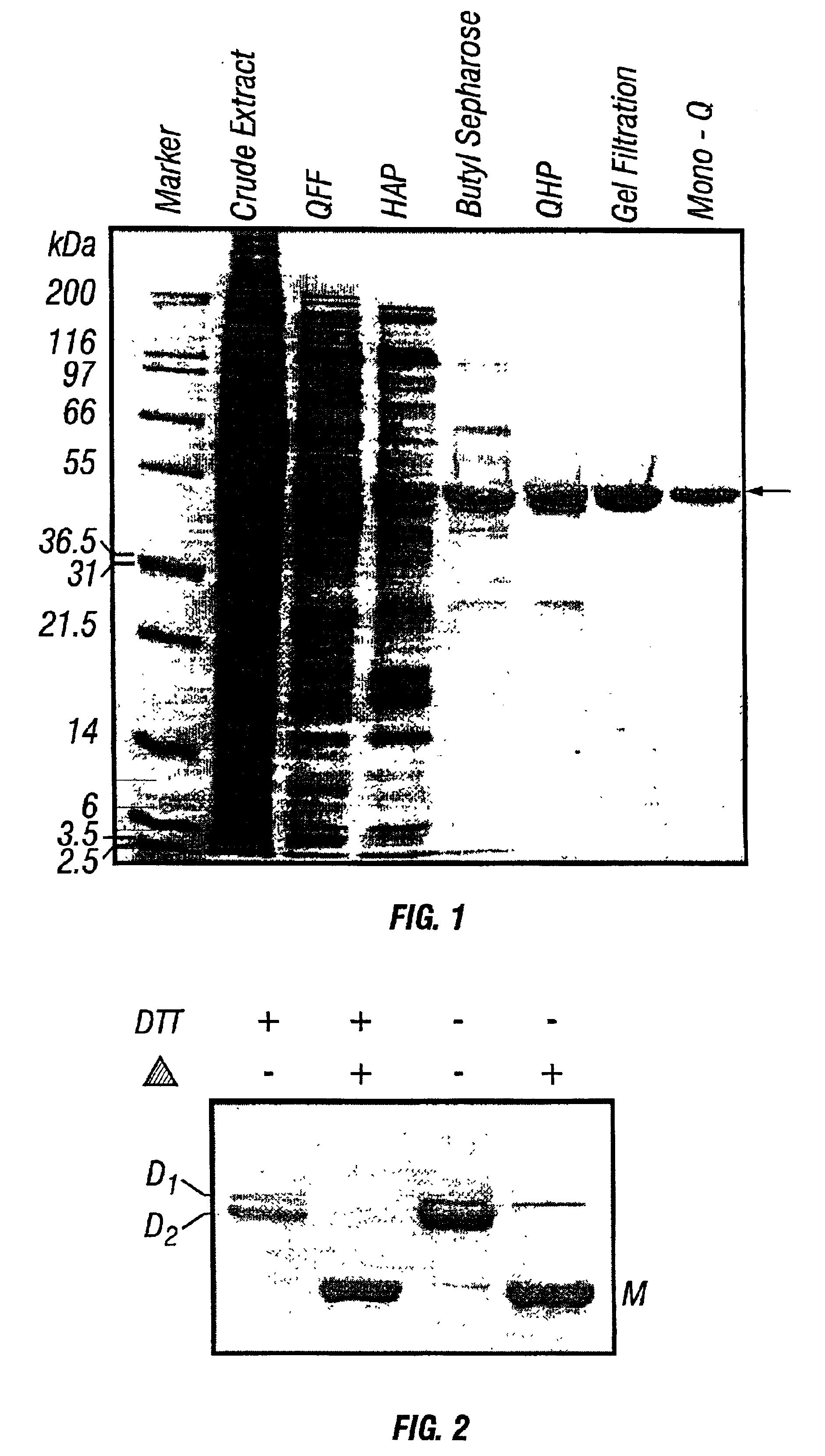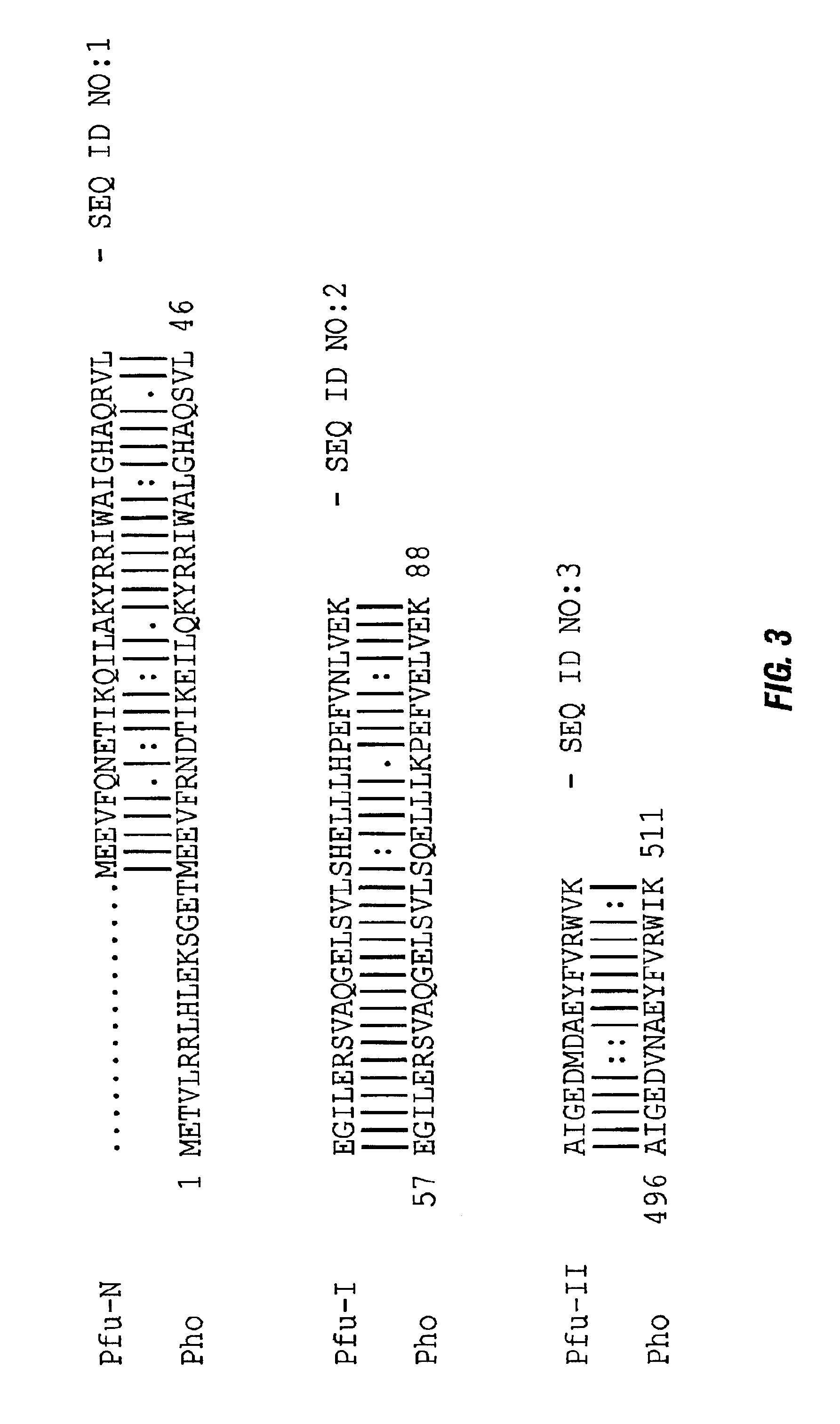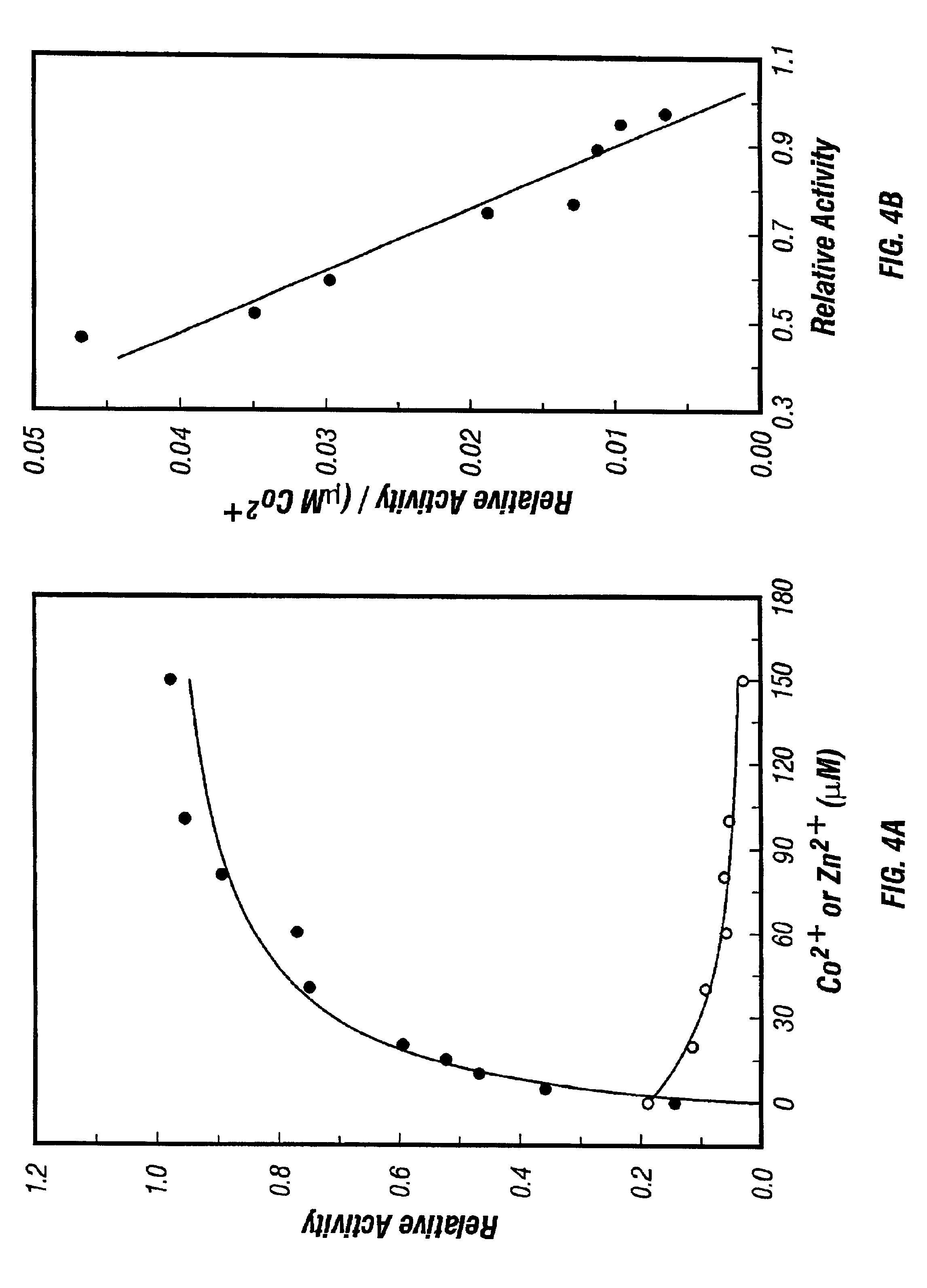Thermostable peptidase
a technology of thermostable peptides and peptides, which is applied in the field of newly identified polynucleotides and polypeptides, can solve the problems of limited applicability of this approach, failure of chemical protection of amino terminus,
- Summary
- Abstract
- Description
- Claims
- Application Information
AI Technical Summary
Benefits of technology
Problems solved by technology
Method used
Image
Examples
example 1
Cell Culture and Cell Extracts
[0150]Archaeal Strain and Culture Conditions: Pyrococcus furiosus strain DSM 3638 was obtained as a lyophilized culture from the Deutsche Sammlung von Microorganismen und Zellkulturen, Braunschweig, Germany. P. furiosus was grown at 90° C. under strictly anaerobic conditions. The archaeon was revived on a complex medium and scaled up in a 450 liter fermentor at the Fermentation Facility, University of Wisconsin (Madison, Wis.). After sterilization, the fermentor was cooled down to 90° C. Solid cysteine hydrochloride was added a few hours before inoculation at a final concentration of 0.4 g.1−1 to pre-reduce the medium. Growth was monitored by measuring the optical density at 600 nm. Cells were harvested at late log phase (Δ OD.˜0.6 in 12 h) with a Sharples continuous centrifuge. The cell paste was frozen immediately in liquid N2 and stored at −80° C. The approximate cell yield (wet weight) was 3 g / L.
[0151]Preparation of P. furiosus Cell Extract: Frozen ...
example 2
Purification of PfuCP
[0153]Purification of PfuCP: The P. furiosus crude extract (8 U.mg−1; 21,400 mg) was loaded at a flow-rate of 20% of 9 ml. min.−1 onto a QFF column (10×30 cm) previously equilibrated with buffer A. Elution was performed over 700 minutes at a flow rate of 9 ml.min−1 with a gradient of 0-0.5 M NaCl in the same equilibraton buffer. QFF fractions between 0.25-0.36 M NaCl containing PfuCP activity (46 U.mg−1) were pooled and suspended in EDTA-free Tris-Cl buffer (pH 6.5) to a total volume of 1220 ml. Dilution of EDTA was achieved by Amicon ultrafiltration through a YM10 membrane (10 kDa cutoff) and the volume was reduced to 75 ml. This procedure was repeated twice and then the combined fractions were diluted to a final volume of 1125 ml and loaded onto a hydroxyapatite column (XK50 column; 50×10 cm) that was pre-equilibrated with 50 mM Tris-Cl (pH 6.5) at a flow rate of 5 ml.min−1. Elution was performed over 420 minutes with a linear gradient of 0-0.5 M potassium pho...
example 3
Enzymatic Activity
[0158]Assay of Enzyme Activity: Unless stated otherwise, enzymatic activity was assayed using 4 μl of enzyme sample in a total volume of 100 μl of 0.1 M KMES buffer (pH 6.5), starting with 2 mM ZAR in the presence of 0.4 mM CoCl2. Polypropylene microcentrifuge tubes were used. The enzyme and substrate were mixed quickly at room temperature and then brought to 80° C.; the equilibration time for the reaction mixture to reach 80° C. was considered negligible relative to the time scale of the assay. The reaction mixture was incubated at 80° C. in a water bath (Neslab EX-200 DD) for 10 minutes followed by quenching on ice. Subsequently, 750 μl of cadmium-ninhydrin reagent (21) was added and the samples were incubated for an additional 5 min at 80° C. for color development followed by quenching on ice. The absorbance was read at 500 nm (HP 8452A diode array spectrophotometer) with an unheated assay mixture containing Cd-ninhydrin reagent serving as the blank. Absorbances...
PUM
| Property | Measurement | Unit |
|---|---|---|
| molecular weight | aaaaa | aaaaa |
| molecular weight | aaaaa | aaaaa |
| dimeric molecular weight | aaaaa | aaaaa |
Abstract
Description
Claims
Application Information
 Login to View More
Login to View More - R&D
- Intellectual Property
- Life Sciences
- Materials
- Tech Scout
- Unparalleled Data Quality
- Higher Quality Content
- 60% Fewer Hallucinations
Browse by: Latest US Patents, China's latest patents, Technical Efficacy Thesaurus, Application Domain, Technology Topic, Popular Technical Reports.
© 2025 PatSnap. All rights reserved.Legal|Privacy policy|Modern Slavery Act Transparency Statement|Sitemap|About US| Contact US: help@patsnap.com



